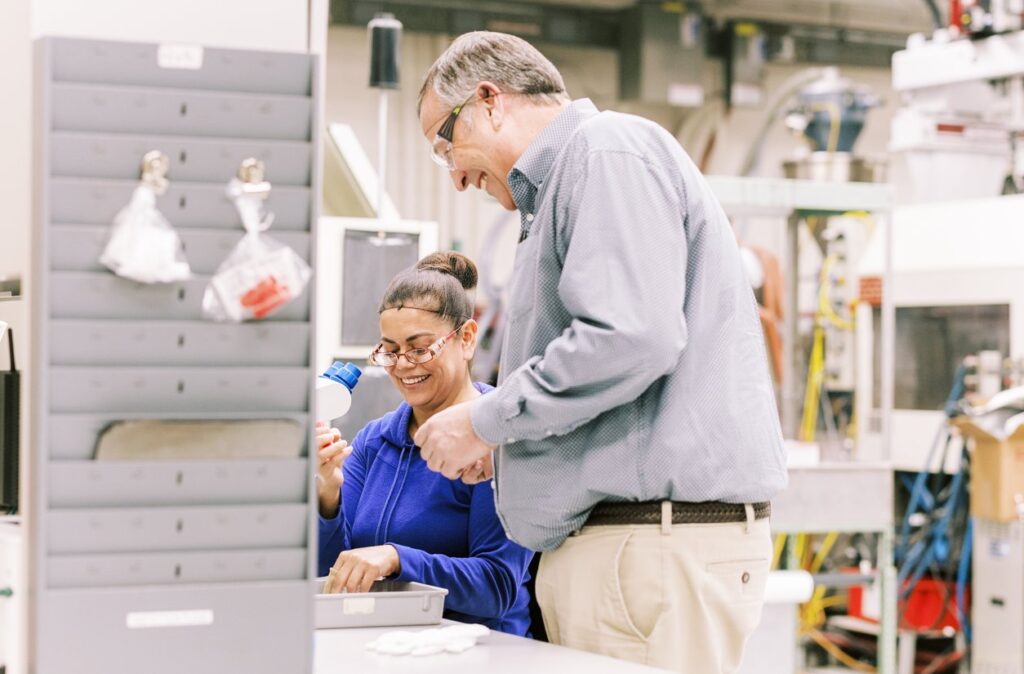When it comes to plastics, the focus is often on packaging types like pouches, bottles and tubs, but caps and spouts are just as critical to the sustainability equation. Representing up to an estimated 20% of a package’s plastic weight, these small yet critical components can determine whether a product is fully recyclable.
For decades, plastics followed a predictable path from production to landfill. Today, forward-thinking companies are charting a different course – one where circularity guides the process. By designing products for durability, repairability and recyclability, businesses are keeping materials in use longer and reducing waste. Instead of relying on a linear approach, the growing circular economy aims to reduce, reuse and recycle, extending the life of resources while minimizing environmental impact.
So, how does the increasing popularity of flexible pouches – and the caps and spouts that make them functional – fit in? Let’s look at four ways flexible packaging can become part of a circular economy.
1. Integrated Material Solutions
Traditional flexible pouches often require separating components before disposal, creating a barrier to recycling. Advances in mono-material design are changing that. With the right infrastructure, these next-generation pouches – film, cap and spout included – can be recycled as a single unit.
Many caps and spouts are produced from polyethylene (PE) or polypropylene (PP), both trusted materials in flexible films with distinct recycling streams. Plus, industry leaders are collaborating with suppliers and customers to incorporate 30% post-consumer recycled (PCR) biodegradable additives for compostable material – showcasing how design innovation and material responsibility can work together to advance the circular economy.
2. Functional Sustainability
Flexible packaging fits seamlessly into today’s fast-paced, on-the-go lifestyle. Yet, in many conventional formats, this convenience can complicate efforts to build a circular economy. Achieving genuine sustainability means viewing the pouch, cap and spout not as separate pieces, but as parts of a unified system engineered for recyclability, resource efficiency and effective material recovery.
For your product to win over consumers, spouts and caps need to do far more than check the box for recyclability. They must deliver on multiple performance fronts:
- Provide tamper-evidence
- Maintain a secure, leak-proof seal
- Incorporate choke-proofing and other safety features
- Reflect brand aesthetics
- Be easy to use
Designing components that meet critical functional requirements – while also using compatible and recyclable materials – requires careful engineering. One promising approach is lightweighting – reducing plastic content in fitment designs without sacrificing performance. This not only supports recyclability but also cuts the need for raw materials and lowers energy.
3. Circular Partnerships
Compared to rigid alternatives, flexible packaging uses fewer raw materials, takes up less space and is lighter in weight.
However, moving from “better” to truly circular requires reimagining the entire system, and that takes every player in the value chain working together:
- Brands
- Equipment manufacturers
- Resin suppliers
- Film extruders and converters
- Caps and spouts suppliers, like Hoffer Plastics
- Contract packagers and co-manufacturers
- Distributors and retailers
- Recovery and recycling facilities
- End users
Here’s the reality: you want a pouch, cap and spout made entirely of polyethylene (PE), maybe even with PCR content. On paper, it’s a perfect circular solution. In practice? PE’s low melting point makes high heat sealing tricky. That’s where collaboration matters. Your supply chain partners must problem solve together to design a package that’s recycle-ready, safe and high-performing, without compromising quality.
4. Supply Chain Sustainability
When every supply chain partner commits to reducing environmental impact, the results multiply. Beyond packaging, this means sourcing responsibly, running efficient production lines and optimizing transport, storage and reuse. Choosing recyclable materials, conserving energy, reducing waste and emissions and aligning with recycling infrastructure ensures packaging is truly recoverable at the end of its life. By embedding these priorities into everyday operations, supply chain partners can create a culture where sustainability is the standard rather than the exception.
Looking Ahead: Advancing Circularity in Flexible Packaging
The path to circularity in flexible packaging is complex, but not out of reach. As the flexible packaging sector continues to evolve, collective action will be key to developing solutions that support circularity while maintaining the performance, safety, and convenience consumers expect.





